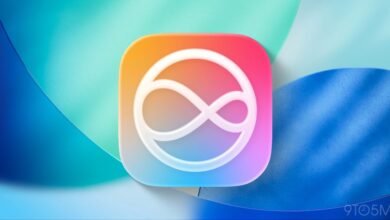iPhone 17 Review: 1 Month Later – Pros and Cons

▼ Summary
– The iPhone 17’s 120Hz refresh rate significantly improves the fluidity and smoothness of scrolling, making it a major upgrade over previous models.
– iOS 26 offers extensive customization for the lock and home screens, including photo shuffle and depth effects that create a personalized experience.
– The 48MP main camera excels in low-light conditions, outperforming rivals like the Galaxy S25 and Pixel 10 with its effective night mode.
– The Camera Control feature is criticized for lacking professional options such as manual shutter speed, ISO, and focus controls, which limits its utility.
– The iPhone 17 provides the best value in Apple’s lineup with features like a dual-camera system and Center Stage, despite no new Apple Intelligence additions.
After spending a full month with the iPhone 17 as my daily driver, I’ve moved beyond initial impressions to form a deeper understanding of its real-world performance. While a week of testing can highlight key features, only extended use reveals how a device truly fits into your life, and where it falls short. This long-term perspective has clarified both the standout upgrades and the frustrating limitations of Apple’s latest offering.
One of the most impactful changes is the introduction of a 120Hz refresh rate to the standard iPhone display. For years, Apple reserved this smoother scrolling experience for its Pro models, even as competitors offered it on budget-friendly devices. Now that it’s here, the difference is impossible to ignore. Navigating menus and browsing content feels remarkably fluid. Switching back to an older model like the iPhone 16 makes the lower refresh rate appear noticeably choppy. It’s one of those upgrades that, once you experience it, becomes a non-negotiable feature.
Customization reaches new heights with iOS 26, particularly on the lock and home screens. While the Liquid Glass design contributes to the overall aesthetic, it’s the personalization options that truly stand out. I set my lock screen to shuffle through my personal photo library, and the depth effect adds a striking three-dimensional quality to wallpapers. The way the digital clock dynamically resizes based on the background image is a thoughtful touch. These features make the iPhone 17 feel uniquely yours in a way previous models did not.
Camera performance remains a critical benchmark, and the iPhone 17’s 48MP main sensor excels in challenging conditions. Although the Pro models boast additional lenses aimed at creators, the standard iPhone 17 holds its own, particularly in low light. I was consistently amazed by its night mode capabilities. In near-total darkness, the camera quickly gathers enough light to produce bright, detailed images, effectively turning night into day. In side-by-side comparisons with rivals like the Galaxy S25 and Pixel 10, the iPhone 17 consistently delivered superior results after sunset.
However, the Camera Control feature feels like a missed opportunity. It functions identically to its debut on the iPhone 16, relying on gestures to switch modes and adjust zoom. While this approach prioritizes simplicity, it frustrates users who want manual control. As someone who shoots professionally, I find it limiting not to have direct access to settings like shutter speed, ISO, or manual focus. This is especially apparent during astrophotography, where the camera often struggles to lock focus automatically instead of allowing me to take charge.
Another letdown is the lack of new Apple Intelligence features. Competing platforms are rapidly advancing with AI-driven tools for everything from productivity to advanced photo editing. The Pixel 10, for example, can execute complex edits through voice commands via Ask Photos. The iPhone 17 offers no comparable time-saving AI utilities, leaving Apple Intelligence feeling underdeveloped just when it should be proving its worth.
When it comes to value, the iPhone 17 represents the smartest investment in Apple’s current lineup. Previous generations saw the iPhone SE holding the value crown, but its successor, the iPhone 16e, now starts at a higher $599. For $799, the iPhone 17 delivers significantly more, including a dual-camera system and the new Center Stage camera. On the other end, the $999 iPhone Air impresses with its ultra-thin design but compromises on camera versatility and battery life. For most users, the iPhone 17 strikes the ideal balance of premium features and sensible pricing.
(Source: Tom’s Guide)





